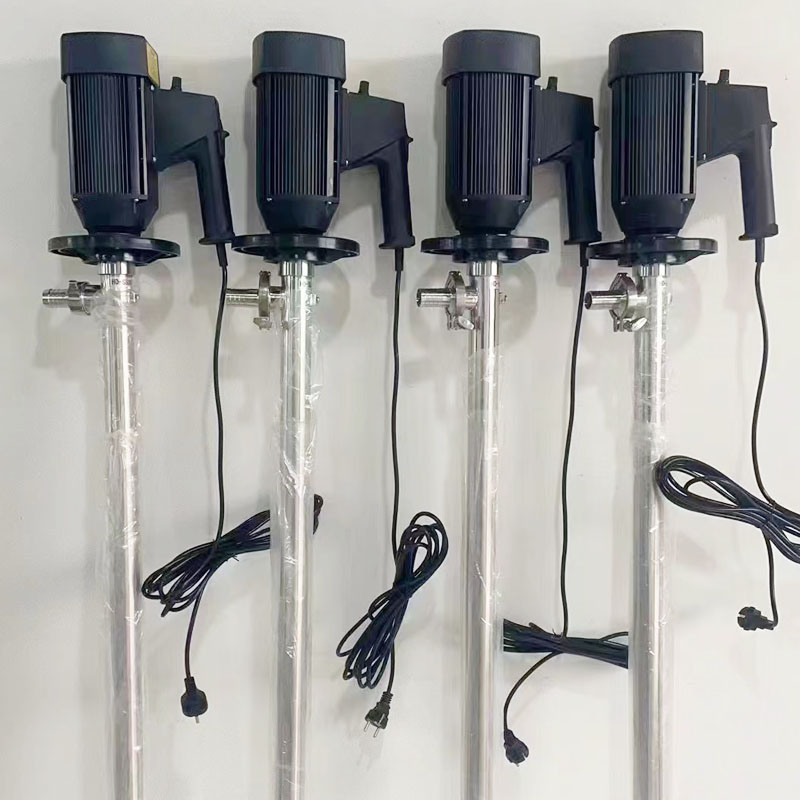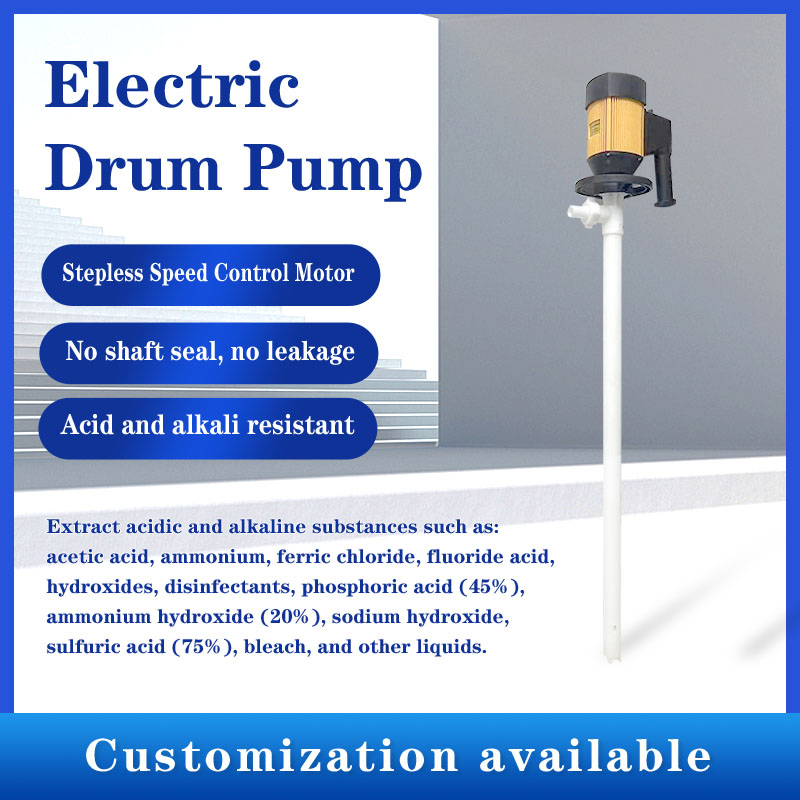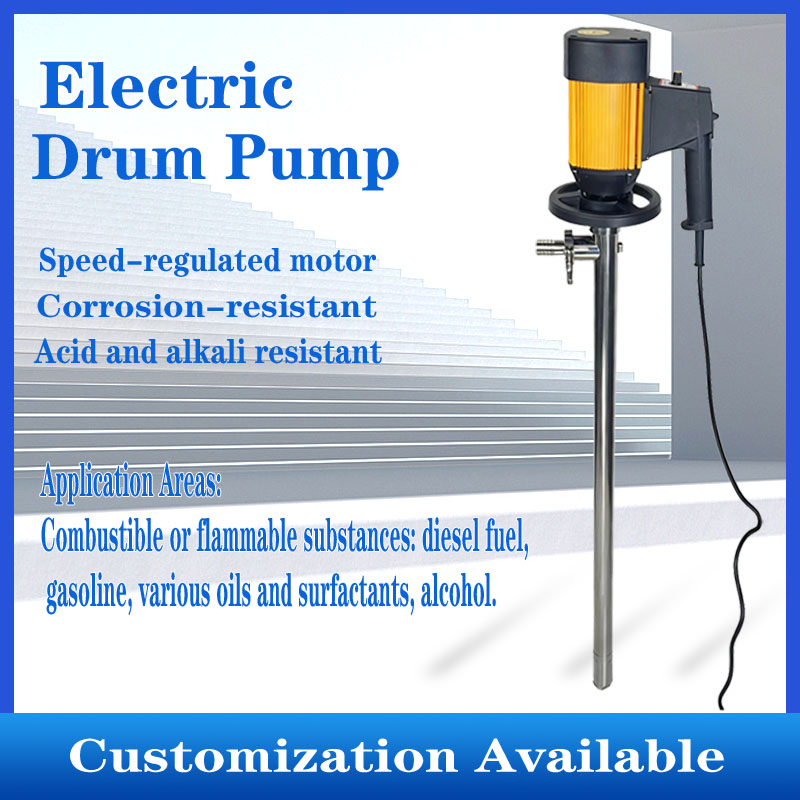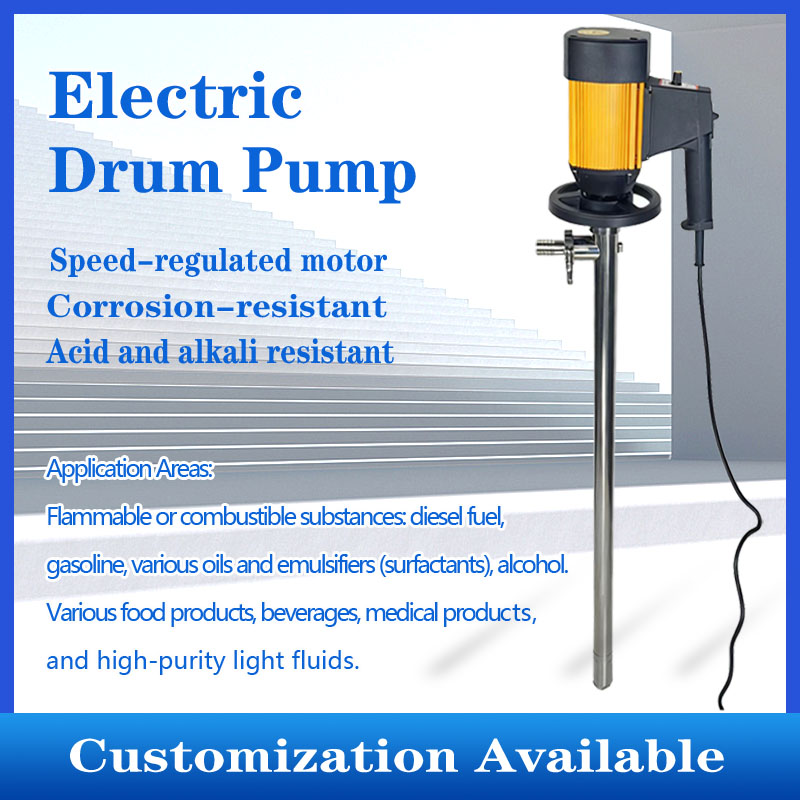Barrel pump knowledge
55 gallon drum pump,55 gallon electric fuel drum pump
目录
fuel pump for 55 gallon drum
55 gallon drum pump use
55 Gallon bucket pump working principle
55 Gallon drum pump maintenance
fuel pump for 55 gallon drum
1. Manual Drum Pumps (No Electricity Needed)
Best for: Occasional use, safety in flammable environments, low-cost solutions.
Flow Rate: ~2–10 liters per minute (LPM).
Top Picks:
GPI Rotary Hand Pump (Model: GPI-2160)
Material: Aluminum (for diesel, kerosene, light oils)
Flow Rate: ~5 LPM
Features: Easy cranking, 1-inch NPT outlet, fits standard bung openings.
Lutz Jesco Manual Barrel Pump (M50 Series)
Material: Steel or HDPE (for gasoline, diesel, chemicals)
Flow Rate: ~8 LPM
Features: Lever-action for faster pumping, includes hose & nozzle.
2. Electric Drum Pumps (Faster, More Efficient)
Best for: Frequent use, workshops, faster transfers.
Flow Rate: ~20–60 LPM.
Top Picks:
Fill-Rite FR1210 12V DC Transfer Pump
Material: Cast iron & steel (for diesel, biodiesel)
Flow Rate: ~30 LPM
Features: 12V motor, 10ft hose, auto shut-off nozzle, great for trucks/equipment.
GPI 115V AC Electric Pump (Model: GPI-EP20H)
Material: Aluminum (gasoline, diesel, kerosene)
Flow Rate: ~38 LPM
Features: 1.5" outlet, thermal overload protection.
3. Battery-Powered Drum Pumps (Portable & Safe)
Best for: Remote locations, no power outlets, ATEX zones.
Flow Rate: ~15–30 LPM.
Top Pick:
Tuthill Transfer Pump (12V Battery Model)
Material: Steel/HDPE
Flow Rate: ~20 LPM
Features: Rechargeable battery, spark-proof, good for gasoline/diesel.
4. Pneumatic (Air-Powered) Pumps (Explosion-Proof)
Best for: Hazardous areas, high safety requirements.
Flow Rate: ~15–40 LPM.
Top Pick:
GoatThroat PTT Series Air-Operated Pump
Material: Stainless steel or HDPE
Flow Rate: ~20 LPM
Features: ATEX-certified, no electricity needed.
Key Buying Considerations
Fuel Type:
Gasoline → Use HDPE, aluminum, or stainless steel (avoid cast iron).
Diesel/Kerosene → Aluminum or steel works well.
Flow Rate Needed:
Manual = Slow (5–10 LPM)
Electric/Battery = Faster (20–60 LPM)
Power Source:
No power? → Manual or pneumatic.
Workshop use? → Electric (115V or 230V).
Portable? → 12V DC or battery-powered.
Safety Certifications:
ATEX for explosive environments.
UL/CE for general safety.
Best Overall Choices
| Use Case | Recommended Pump |
|---|---|
| Low-cost manual | Lutz Jesco M50 Lever Pump |
| Fast electric | Fill-Rite FR1210 (12V Diesel) |
| Portable battery | Tuthill 12V Rechargeable Pump |
| Explosion-proof | GoatThroat PTT Air Pump |
55 gallon drum pump use
A 55-gallon drum pump is a versatile tool designed to safely and efficiently transfer liquids from standard 55-gallon drums (barrels). Here’s a detailed breakdown of its common uses, types, and best practices:
Common Uses for 55-Gallon Drum Pumps
1. Fuel Transfer
Liquids: Gasoline, diesel, kerosene, biodiesel
Best Pump Type: Explosion-proof electric (e.g., Fill-Rite FR1612) or pneumatic
Applications:
Refueling equipment (tractors, generators)
Fleet maintenance
Backup fuel storage
2. Chemical Handling
Liquids: Acids, solvents, bleach, detergents
Best Pump Type: Chemical-resistant (e.g., Finish Thompson PVDF or Lutz polypropylene)
Applications:
Industrial manufacturing
Laboratory chemical dispensing
Cleaning supply distribution
3. Lubricants & Oils
Liquids: Motor oil, hydraulic fluid, gear oil
Best Pump Type: Electric with thermal protection (e.g., GPI GPE20)
Applications:
Machine maintenance
Automotive shops
Agricultural equipment servicing
4. Water & Non-Corrosive Liquids
Liquids: Water, antifreeze, food-grade liquids
Best Pump Type: Affordable electric (e.g., Standard Pump SP Series)
Applications:
Emergency water supply
Beverage industry
Coolant systems
5. Viscous Fluids
Liquids: Paints, adhesives, syrups, molasses
Best Pump Type: High-pressure pneumatic or Graco Husky series
Applications:
Paint shops
Food processing
Construction adhesives
Types of 55-Gallon Drum Pumps
| Type | Power Source | Best For | Pros | Cons |
|---|---|---|---|---|
| Electric | 12V DC/115V AC | Fuel, water, oils | Easy to use, adjustable flow | Not for flammable areas |
| Pneumatic | Compressed air | Chemicals, paints | Explosion-proof, no electricity | Requires air compressor |
| Manual | Hand-operated | Small transfers, emergencies | No power needed, portable | Slow, labor-intensive |
How to Use a Drum Pump Safely
Inspect the Pump
Check for cracks, leaks, or worn seals before use.
Ensure compatibility with your liquid (e.g., chemical resistance).
Prepare the Drum
Place the drum on a stable surface or dolly.
Remove bung caps and insert the pump tube fully.
Transfer the Liquid
For electric pumps: Plug in (or connect to battery) and turn on.
For pneumatic pumps: Adjust air pressure (typically 20–100 PSI).
Control flow with a valve or hose clamp.
Shut Down & Clean
Turn off and disconnect power.
Drain residual liquid from hoses.
Flush with a compatible solvent if used for chemicals.
Safety Tips
For Flammables:
Use only explosion-proof (EX-rated) pumps.
Ground the drum to prevent static sparks.
For Chemicals:
Wear PPE (gloves, goggles).
Ensure proper ventilation.
General:
Never run the pump dry (can damage seals).
Store pumps upright in a dry place.
55 Gallon bucket pump working principle
A 55-gallon bucket pump is designed to transfer liquids (like water, oils, chemicals, or fuels) from a standard 55-gallon drum or barrel. These pumps can operate using different mechanisms, depending on the type. Here are the common working principles:
1. Manual Hand Pump (Siphon or Rotary)
Working Principle: Operated by hand, either through a lever or rotary motion.
Siphon Pump: Uses suction to draw liquid up through a tube via manual pumping.
Rotary Hand Pump: A crank turns an impeller or diaphragm, creating pressure to move the liquid.
Best For: Small-scale, infrequent transfers where electricity is unavailable.
2. Electric Drum Pump
Working Principle: Uses an electric motor to drive an impeller or gear mechanism.
Centrifugal Pump (Common): Motor spins an impeller, creating suction to draw liquid up and push it out through a discharge hose.
Gear Pump: Uses rotating gears to move viscous fluids (like oils).
Best For: Faster, continuous liquid transfer in industrial settings.
3. Pneumatic (Air-Powered) Pump
Working Principle: Uses compressed air to drive a piston or diaphragm.
Diaphragm Pump: Air pressure flexes a diaphragm, creating suction and discharge cycles.
Best For: Hazardous or flammable liquids (no electricity = no sparks).
4. Battery-Operated Pump
Working Principle: Similar to electric pumps but powered by rechargeable batteries.
Best For: Portable use in remote locations.
Key Components of a 55-Gallon Bucket Pump:
Intake Tube: Extends into the drum to draw liquid.
Motor/Mechanism: Provides power (manual, electric, pneumatic).
Discharge Hose: Directs liquid to the desired location.
On/Off Switch or Valve: Controls flow.
Mounting Bracket: Secures the pump to the drum’s opening.
55 Gallon drum pump maintenance
Maintaining a 55-gallon drum pump ensures longevity, efficiency, and safe operation. The exact maintenance steps depend on the pump type (manual, electric, pneumatic, or battery-operated), but here’s a general guide:
1. Regular Cleaning
After Each Use:
Flush the pump with a compatible solvent or clean water (especially for chemical or fuel pumps).
Remove residue to prevent clogging or corrosion.
For Sticky or Viscous Liquids:
Disassemble and clean internal parts (impeller, gears, or diaphragm) if buildup occurs.
2. Inspect for Wear & Damage
Check Hoses & Seals:
Look for cracks, leaks, or swelling in hoses and O-rings.
Replace damaged parts to prevent leaks.
Motor/Bearings (Electric/Pneumatic):
Listen for unusual noises (grinding, squeaking) indicating worn bearings.
Lubricate if required (check manufacturer’s guidelines).
3. Lubrication (If Applicable)
Manual Pumps:
Apply food-grade lubricant to moving parts (e.g., lever joints) if used with edible liquids.
Gear Pumps:
Use compatible oil/grease on gears (avoid petroleum-based lubes for food-grade pumps).
Avoid Over-Lubrication: Excess lubricant can contaminate pumped liquids.
4. Electrical & Battery Care (For Electric/Battery Pumps)
Check Wiring & Connections:
Look for frayed wires or loose terminals.
Battery Maintenance:
Recharge batteries fully before storage.
Store in a dry, cool place if unused for long periods.
5. Storage Tips
Dry & Protected: Store indoors away from extreme temperatures.
Drain Liquids: Prevent freezing (for water-based pumps) or residue hardening.
Cap Openings: Seal intake/discharge ports to keep out dust/debris.
6. Troubleshooting Common Issues
| Problem | Possible Cause | Solution |
|---|---|---|
| Pump won’t prime | Clogged intake, air leaks | Clean tube, check seals |
| Weak flow/low pressure | Worn impeller/gears, clog | Inspect/replace parts |
| Leaking | Damaged seals/hoses | Replace O-rings/gaskets |
| Motor overheating (electric) | Blocked vent, voltage issue | Clean vents, check power |
When to Replace the Pump
Persistent leaks/seal failures.
Corrosion (especially in chemical pumps).
Motor failure (costly repairs may warrant a new pump).
Pump-Specific Tips
Diaphragm Pumps: Inspect diaphragm for tears.
Gear Pumps: Check gear teeth for wear.
Manual Siphon Pumps: Ensure check valves aren’t stuck.
Pro Tip: Follow the manufacturer’s maintenance schedule for optimal performance.




